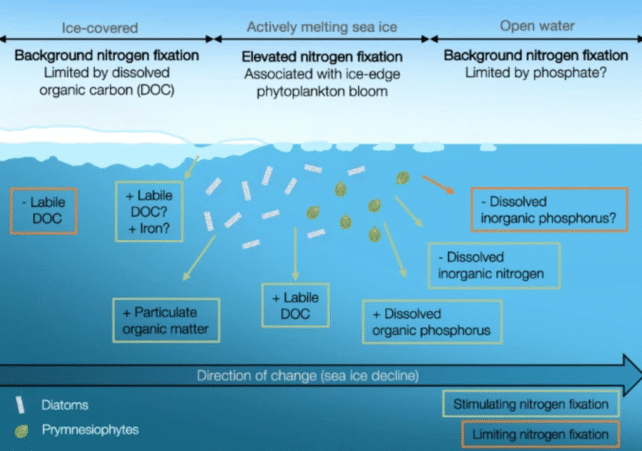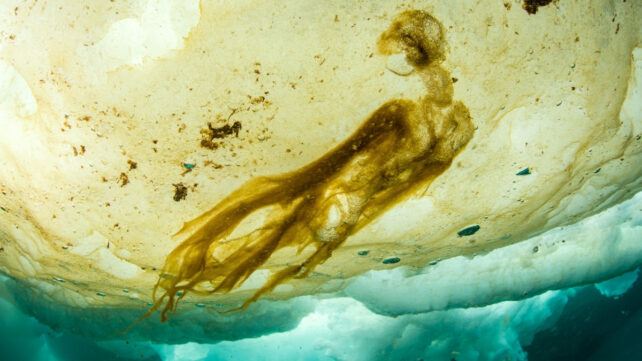Scientists have discovered special life forms thriving under Arctic sea ice. Until now, their presence in these dark and frigid conditions wasn't thought possible, and the findings could have global implications for the climate.
Nitrogen gas makes up roughly 78 percent of Earth's atmosphere, and all organisms require it to survive, yet most can't use the element unless it's first converted to ammonia or ammonium.
Microbes that can grab nitrogen from the air are called nitrogen-fixers, and they provide a foundational resource for entire ecosystems. Historically, scientists believed that in oceans, these organisms were exclusive to warm, tropical waters.
Now, we know better.
Related: Earth's Underworld Is Full of Life, And It Goes Deeper Than We Ever Knew
"It was believed that nitrogen fixation could not take place under the sea ice because it was assumed that the living conditions for the organisms that perform nitrogen fixation were too poor," says lead author and biologist Lisa von Friesen from the University of Copenhagen.
"We were wrong."
Only in the last decade or so have researchers begun to consider the Arctic Ocean as an overlooked source of nitrogen-fixing bacteria.
While scientists have previously found nitrogen-fixers in cold Arctic waters, von Friesen and her colleagues are the first to discover these microbes under sea ice.
Samples from the Central Arctic Ocean and the Eurasian Arctic have revealed a community of thriving microbes called non-cyanobacterial diazotrophs (NCDs). This is a fancy name for bacteria that fix nitrogen but don't photosynthesize.
Researchers have not yet shown that these microbes are fixing nitrogen in the Arctic, only that they have the genetic machinery to do so. Their distribution and abundance, however, suggest they are closely involved in the region's nitrogen-fixing activity.
If that's true, these microscopic life forms could have a global impact.

Researchers found that the fringes of Arctic sea ice tend to host more nitrogen-fixing bacteria and higher nitrogen-fixing activity. This suggests that as Arctic ice rapidly melts with climate change, more of these unique microbes may proliferate, altering the marine food web and impacting the atmosphere itself.
NCDs feed algae, and if algae expand in the Arctic, they could support a richer food web.
"Because algae are the primary food source for small animals such as planktonic crustaceans, which in turn are eaten by small fish, more algae can end up affecting the entire food chain," explains von Friesen.
More algae in the Arctic could also trap more carbon dioxide from the atmosphere.
"If algae production increases, the Arctic Ocean will absorb more CO2 because more CO2 will be bound in algae biomass," says marine microbial ecologist Lasse Riemann.
"But biological systems are very complex, so it is hard to make firm predictions, because other mechanisms may pull in the opposite direction."
What is clear, Riemann argues, is that nitrogen fixers in the Arctic need to be incorporated into future climate models.
"Sea ice melt may, directly or indirectly, stimulate nitrogen fixation," the research team concludes.
"We consequently encourage a future modeling effort targeting the magnitude and dynamics of nitrogen fixation in the Arctic Ocean."
The study is published in Communications Earth & Environment.

